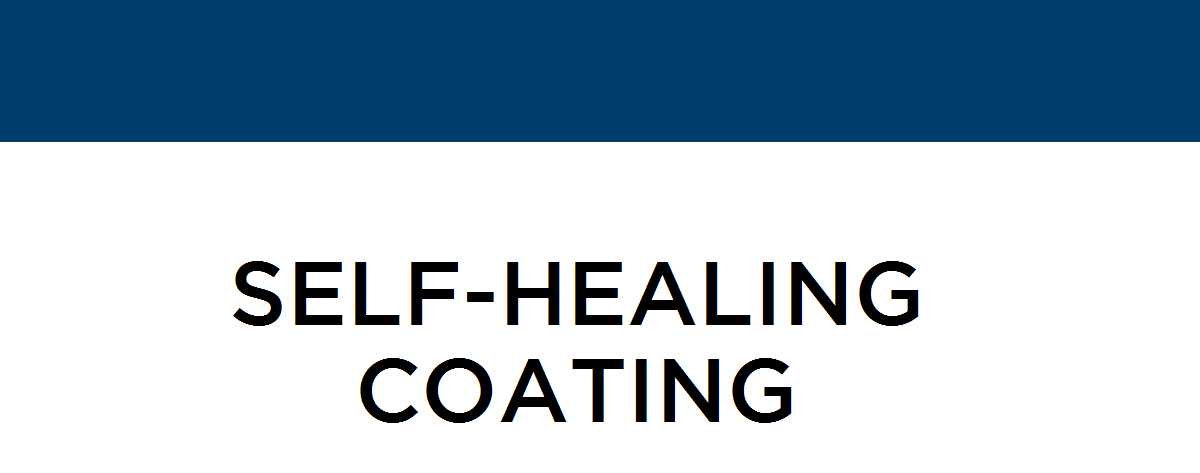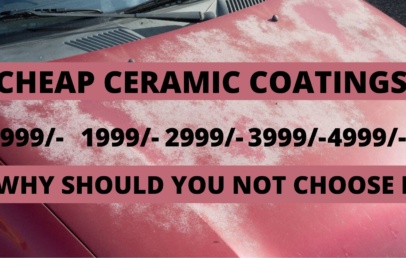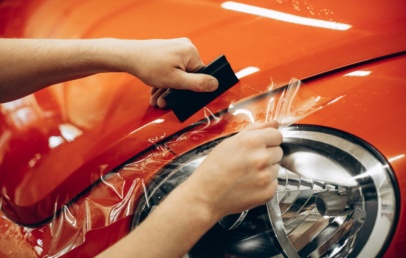
A Technical Dive into Self-Healing Ceramic Coatings: Composition, Mechanisms, and Performance
Self-healing ceramic coatings represent an innovative advancement in surface protection, combining nanotechnology and material science to provide vehicles and other surfaces with enhanced durability, resistance, and aesthetics. These coatings are designed to repair minor surface scratches and imperfections autonomously, effectively extending the lifespan of the coated surface. In this technical blog, we will explore the intricate chemical makeup of self-healing ceramic coatings, the mechanisms driving their self-healing properties, and their pros and cons.
Chemical Composition of Self-Healing Ceramic Coatings
Self-healing ceramic coatings are complex formulations that typically consist of several key components designed to deliver both protective and self-healing properties:
1. Nanoscale Ceramic Particles
- Silicon Dioxide (SiO₂): Commonly used in ceramic coatings, these nanoscale particles form the primary protective layer. SiO₂ is well-known for its hardness, chemical resistance, and ability to impart a glass-like finish.
- Titanium Dioxide (TiO₂): Often used for its UV-blocking capabilities and added chemical resilience. In addition to enhancing the surface hardness, TiO₂ also provides photocatalytic properties, aiding in self-cleaning functions.
2. Thermoplastic Polymers
- These polymers are the key to the self-healing function of the coating. When exposed to heat, thermoplastic polymers exhibit reversible softening, allowing them to flow and repair surface damage before solidifying again. This property enables minor scratches to disappear under thermal stimulation.
3. Thermosetting Polymers
- These polymers are designed to maintain the structural integrity of the coating while still providing some degree of reactivity when heated. Although thermosetting polymers are less flexible than thermoplastics, they contribute to the overall durability and adhesion of the coating.
4. Solvents and Binders
- Solvents serve as carriers for the ceramic particles and polymers, allowing for uniform application. Once applied, the solvents evaporate, leaving behind a solid, cohesive layer of protection.
5. Additives
- UV Stabilizers: Added to protect the coating from photodegradation, preventing yellowing or brittleness over time.
- Hydrophobic and Oleophobic Agents: These additives increase water and oil repellency, ensuring that dirt and contaminants are less likely to adhere to the surface.
Mechanism of Self-Healing in Ceramic Coatings
The self-healing ability of these coatings is rooted in the behavior of their thermoplastic polymers, which respond to heat stimuli. Below is a step-by-step breakdown of how self-healing occurs:
1. Activation of Polymer Mobility
When minor damage like scratches or abrasions occur, they disrupt the polymer matrix. However, the thermoplastic polymers embedded within the coating are engineered to activate upon exposure to heat.
2. Thermal Energy as a Catalyst
The introduction of a heat source—such as sunlight, a heat gun, or warm water—raises the temperature of the coating. This causes the polymer chains to increase in mobility, effectively “melting” the disrupted area.
3. Polymer Reorganization
As the polymers become mobile, they reorganize themselves along the path of the scratch or imperfection. The fluidity of the polymers allows them to fill in and seal minor surface damage.
4. Restoration of the Surface
Once the polymers cool and harden again, the surface returns to its original state, making the scratch or blemish less visible or even invisible.
Factors Influencing Self-Healing:
- Extent of Damage: Self-healing coatings can effectively repair minor scratches, but deeper or more severe damage may remain visible, as the polymers cannot fill in large gaps.
- Number of Self-Healing Cycles: While self-healing is a repeatable process, the coating’s ability to heal diminishes after multiple cycles due to polymer fatigue.
Heat-Activated Self-Healing in Ceramic Coatings
Heat-activated self-healing is a process where a coating repairs minor surface damage when exposed to thermal energy. This mechanism is primarily driven by the thermoplastic polymers embedded within the ceramic coating. When the surface is scratched, these polymers become disorganized at the site of the damage. Upon exposure to a heat source—such as sunlight, warm water, or a heat gun—the polymers soften and mobilize, filling in the scratched area and reforming their original structure. Once the surface cools, the polymers solidify, effectively restoring the coating to its original smooth state. This process can often be repeated multiple times, depending on the formulation, but the number of cycles is finite due to polymer fatigue over time. Heat-activated healing is a gradual process and usually requires several minutes to hours depending on the intensity of heat exposure.
Instant Self-Healing Coatings
In contrast to heat-activated coatings, instant self-healing coatings can repair surface damage without any external stimulus. These advanced coatings typically contain highly elastic polymers that react immediately when scratched or abraded. Upon disruption, the polymers exhibit rapid elasticity and reorganize their molecular structure to fill in the damaged area. The advantage of instant self-healing lies in its ability to repair damage almost immediately without the need for additional heating. However, such coatings may be more sensitive to repeated mechanical stress and could offer slightly less durability compared to heat-activated coatings. This instantaneous reaction makes them particularly useful for environments where constant surface protection is needed without intervention.
Advantages of Self-Healing Ceramic Coatings
1. Scratch Resistance
Self-healing ceramic coatings provide a protective shield that can repair minor abrasions and swirl marks, ensuring that the surface remains smooth and unmarred for extended periods.
2. UV Protection
The presence of UV-blocking agents like TiO₂ protects the underlying surface from sun damage, preventing paint fading and oxidation. This is particularly beneficial for vehicle exteriors that are constantly exposed to sunlight.
3. Gloss and Aesthetics
Self-healing coatings enhance the visual appeal of surfaces by providing a glossy, reflective finish. The self-healing properties further preserve this shine by keeping the surface free from minor imperfections.
4. Chemical Resistance
These coatings are highly resistant to environmental contaminants, including road salts, bird droppings, and acidic chemicals. The robust chemical composition ensures long-lasting protection against harsh elements.
5. Longevity
When properly applied and maintained, self-healing ceramic coatings can last for several years, offering extended protection with minimal degradation over time.
Limitations and Challenges of Self-Healing Ceramic Coatings
1. Limited Healing Ability
While these coatings can repair minor scratches, they cannot mend deeper gouges, rock chips, or extensive damage. For severe abrasions, a full reapplication may be required.
2. Finite Self-Healing Cycles
Self-healing coatings have a limited number of cycles before the polymers lose their ability to effectively reorganize. Over time, repeated heating and cooling can reduce the coating’s self-healing performance. For most coatings, this is typically around 100-200 self-healing cycles, depending on the polymer composition.
3. Complex Application Process
Proper application of self-healing ceramic coatings requires professional expertise. Surface preparation must be meticulous to ensure proper adhesion and uniform application. This process often includes paint correction, cleaning, and layering the coating evenly.
4. Maintenance Requirements
While self-healing properties reduce surface damage, regular maintenance is still necessary to preserve the coating’s performance. Frequent washing, along with the use of appropriate maintenance products, is crucial for long-term durability.
5. High Cost
Due to the complexity of the formulation and the professional application needed, self-healing ceramic coatings are often more expensive than traditional coatings. The high initial investment can be a barrier for some consumers.
Key Questions to Consider Before Choosing Self-Healing Ceramic Coatings
Before investing in self-healing ceramic coatings, it’s important to evaluate the following questions:
- How many self-healing cycles can the coating withstand before it loses its effectiveness?
- Most coatings have a finite number of healing cycles, typically between 100-200, after which their self-repair capabilities diminish.
- What level of surface preparation is required for optimal performance?
- The effectiveness of the coating is highly dependent on surface preparation, which may require professional paint correction.
- How does the coating perform in extreme weather conditions?
- The self-healing process is reliant on heat, and in colder climates, the self-healing capability may not activate without external heat sources.
- What is the expected longevity of the coating under regular use?
- While these coatings can last several years, their durability is affected by environmental exposure, maintenance practices, and the frequency of self-healing cycles.
- Are there specific areas of the vehicle that benefit more from self-healing coatings?
- Self-healing ceramic coatings are most beneficial in areas prone to light scratches and abrasions, such as the hood, doors, and mirrors. However, they may not be as effective for regions exposed to high-impact debris like the front bumper.
- Is the coating environmentally friendly?
- The production and disposal of some self-healing coatings may involve materials and processes that have environmental impacts. It is important to choose coatings that prioritize eco-friendly components.
Conclusion: Is Self-Healing Ceramic Coating Worth the Investment?
Self-healing ceramic coatings represent an exciting leap in surface protection technology, offering a unique combination of durability, aesthetics, and minor scratch repair. However, they are not without their limitations. The finite number of self-healing cycles, complex application process, and high cost are significant factors to consider. Moreover, while these coatings excel at repairing minor surface imperfections, they cannot fully protect against deeper damage or severe environmental conditions.
For those seeking a long-lasting, aesthetically pleasing protective solution, self-healing ceramic coatings can be an excellent choice, provided that proper maintenance and application practices are followed. However, it is essential to approach these coatings with realistic expectations regarding their capabilities and limitations.
Disclaimer : The content provided on this blog by Torquoholic is intended for informational purposes only. The views and opinions expressed herein are those of the individual authors and do not necessarily reflect the official policy or position of Torquoholic as a whole. Some content posted on this blog is created by Torquoholic's team, while other content is derived from various sources on the internet, books, discussions, and knowledge sharing by industry professionals. While we strive to ensure the accuracy and reliability of the information provided, we cannot guarantee its completeness or timeliness. The information presented on this blog is based on our personal research and understanding of the topic at hand. It should not be interpreted as a comprehensive education on the subject matter. Readers are encouraged to conduct their own research and consult with relevant professionals for specific advice or information. Torquoholic shall not be held liable for any errors, omissions, or inaccuracies in the content provided on this blog, nor for any actions taken in reliance thereon. We disclaim any responsibility for the content of external websites linked to from this blog. By accessing and using this blog, you agree to indemnify and hold Torquoholic and its authors harmless from any claims, damages, or losses arising from your use of the information provided herein. Thank you for your understanding and continued support.




